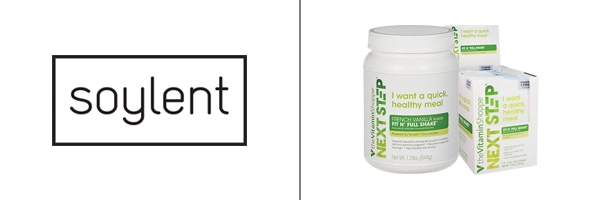The Theory Behind Soylent and Other “Food 2.0” Branding
As I started to read a packaging design article titled “Why Do So Many Food 2.0 Companies Look Alike?” by Margaret Andersen for the AIGA Eye on Design blog – I was immediately captured by the subject, design theories and product backgrounds.
First of all, I love the term Food 2.0. There’s a futuristic quality to this term that lends to the theory that food has been redeveloped, or at least it’s packaged better.
I have a bit of personal history with these products, having tried a few different ones myself. This is one reason I was drawn to this article in the first place. Of the 3 different products that I have first-hand experience with, two of them are packaged with this new simplistic, modern look. Devoid of color, ornamentation and stylistic fonts, the packaging has a futuristic, utopian, almost homogenized look to it.

The original article shared some direct quotes from the designers/design teams that were involved with developing and personalizing these different brands. Their design references ranged from religious iconography in Pisa to the minimalist labeling of NASA’s space equipment. I like to examine a similarly broad array of inspirational designs when I do research for a new brand identity project. I like to hear how other designers work to achieve their design solutions.
However, with all the “less is more” and “getting back to basics” identity system theories presented, I think they are forgetting that this brand look has been tried before by generic/store brands. Initially, these brands featured white packaging, with minimal text: some might say no design, no personality… no brand. Consumer’s often felt that these products were inferior, or made with inferior ingredients, which resulted in mistrust and lost sales. Today, generic brand companies have mostly dropped the all-white, minimal packaging, usually replacing it with packaging that mimics major brands.
Don’t get me wrong, I personally like the Minimalist Modern look for complete food systems, but I wonder if their resemblance to the generic brands of years ago will prevent them from gaining market share as fast as they otherwise would.
I have seen other design solutions and have brainstormed some of my own that fit the Minimalist Modern aesthetic while staying clear of features that can make a brand feel generic. There is a lot of room to be more expressive, but still keeping to the principals of the Food 2.0 movement.
We’re eager to dive into this arena, so if you’re a complete food system company looking to take your products to the top then shoot us a note today!
Contact us today to learn more!





